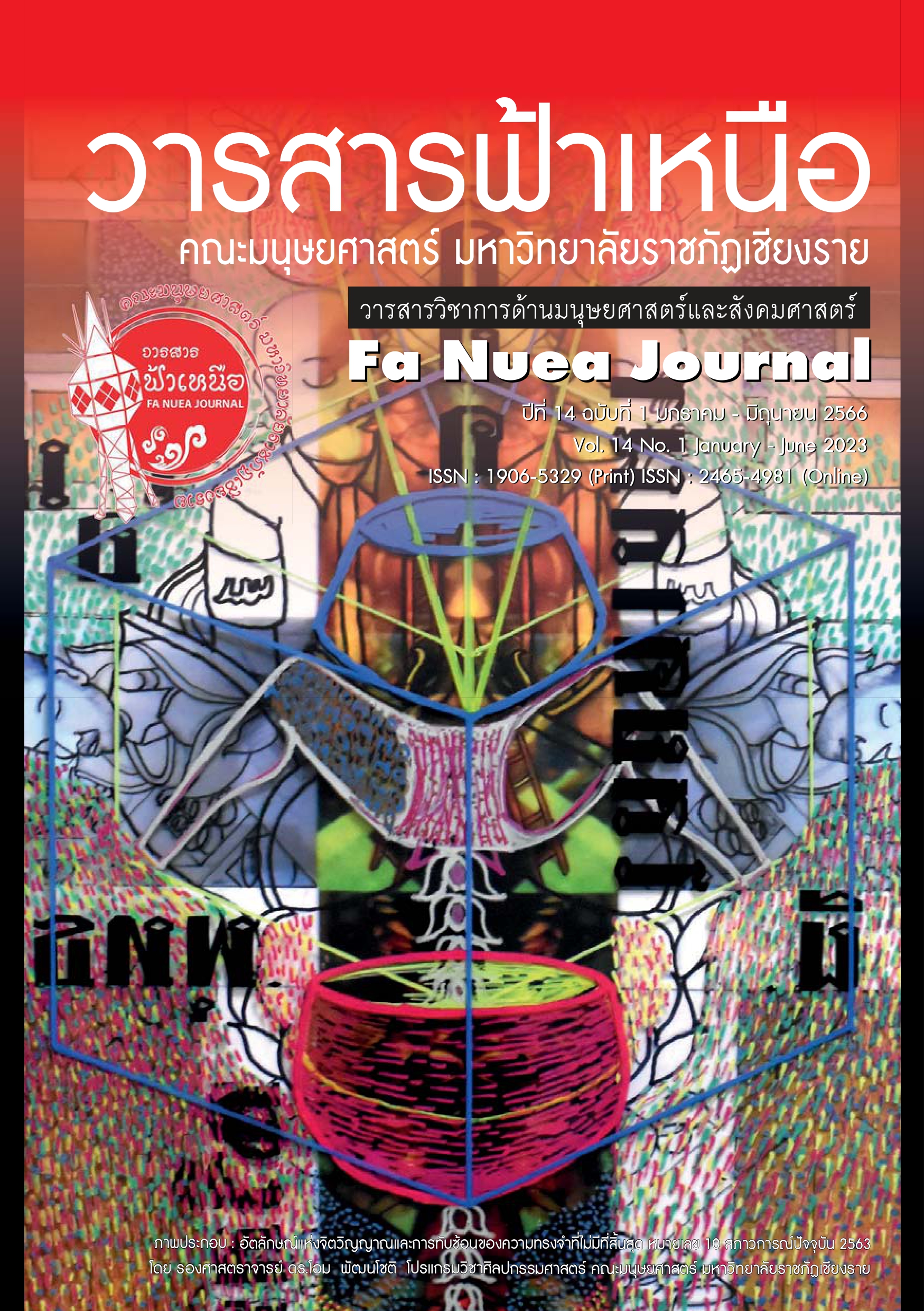Sexual Meaning in Noun-Incorporated Compound Verbs
Main Article Content
Abstract
This research aimed to analyze and classify types of sexual meaning in noun-incorporated compound verbs in Thai language.The result demonstrated that there was no noun-incorporation of compound verbs that had a direct meaning, but there were 59 noun-incorporation of compound verbs in the grammarticalization for words used in the metaphor which were classified into 2 levels of meaning: 30.51 percent of 18 incompleted conventional noun-incorporated compound verbs, and 69.49 percent of 41 completed conventional noun-incorporated compound verbs.There were 4 classification groups of noun-incorporated compound verbs with meanings related to sexuality: 1) 5 words of phrases related to gender of incompleted conventional noun-incorporated compound verbs, and 5 words of completed conventional noun-incorporated compound verbs; 2) 3 words of phrases related to physical sexual characteristics of incompleted conventional noun-incorporated compound verbs, and 5 words of completed conventional noun-incorporated compound verbs; 3) 5 words of phrases related to sexual activities of incompleted conventional noun-incorporated compound verbs, and 10 words of completed conventional noun-incorporated compound verbs, and 4) 5 words of phrases related to sexual orientation of incompleted conventional noun-incorporated compound verbs, and 21 words of completed conventional noun-incorporated compound verbs.
Article Details

This work is licensed under a Creative Commons Attribution-NonCommercial-NoDerivatives 4.0 International License.
Articles, information, content, pictures, etc. which have been published in Fa Nuea Journal, are copyright of Fa Nuea Journal. If any person or party wishes to disseminate all or part of it or take any action must be referenced. Do not use for commercial purposes and do not modify (CC-BY-NC-ND). For further details, please access at Attribution-NonCommercial-NoDerivatives 4.0 International (CC BY-NC-ND 4.0)
References
การุญญ์ พนมสุข. (2549). การวิเคราะห์เปรียบเทียบอุปลักษณ์ในบทอัศจรรย์ของวรรณกรรมไทย. [วิทยานิพนธ์ปริญญาศิลปศาสตรมหาบัณฑิต, มหาวิทยาลัยธรรมศาสตร์].
กฤตยา อาชวนิจกุล. (2554). เพศวิถีที่กำลังเปลี่ยนแปลงไปในสังคมไทย. วารสารประชากรและสังคม, 15(1), 43-65.
ชนิกา พรหมมาศ. (2560). กริยาประสมแบบรวมนามในภาษาไทย [วิทยานิพนธ์ศิลปศาสตรดุษฎีบัณฑิต, ไม่ได้ตีพิมพ์]. มหาวิทยาลัยนเรศวร.
นพวรรณ เมืองแก้ว และเชิดชัย อุดมพันธ์. (2563). อุปลักษณ์เรื่องเพศในรายการหาคู่ “The Love Machine วงล้อ ลุ้นรัก”. วารสารศิลปศาสตร์ มหาวิทยาลัยแม่โจ้, 8(2), 160-177.
บงกชกร ทองสุก. (2558). การศึกษาอุปลักษณ์เชิงมโนทัศน์ในคำศัพท์เรื่องเพศ จากพจนานุกรมคำใหม่ เล่ม 1. วารสารมนุษยศาสตร์ มหาวิทยาลัยนเรศวร, 12(1), 33-44.
มลฤดี ลาพิมล, พิมพวัลย์ บุญมงคล, ศรันยา สิงห์ทองวรรณ, อุไรรัตน์ หน้ำใหญ่ และรณภูมิ สามัคคีคารมย์. (2551). วาทกรรมเรื่องเพศในหลักสูตรเพศศึกษาแนวใหม่: มุมมอง การต่อรอง และการประยุกต์ใช้. มูลนิธิสร้างความเข้าใจเรื่องสุขภาพผู้หญิง (สคส.) และสถาบันวิจัยประชากรและสังคม (วปส.)มหาวิทยาลัยมหิดล.
ราชบัณฑิตยสถาน. (2556). พจนานุกรมฉบับราชบัณฑิตยสถาน พ.ศ. 2554. (พิมพ์ครั้งที่ 2). นานมีบุ๊คส์พับลิเคชั่นส์.
เสถียร จันทิมาธร, ประพันธ์ ผลเสวก, บริสุทธิ์ กาสินพิลา, สรกล อดุลยานนท์, ฐากูร บุนปาน, สุพจน์ แจ้งเร็ว, วรศักดิ์ ประยูรศุข และสุวพงศ์ จั่นฝังเพ็ชร. (2543). พจนานุกรมนอกราชบัณฑิตยฯ. มติชน.
อัญชลี สิงห์น้อย. (2552). การวิเคราะห์หน่วยสร้างกริยาประสมภาษาไทยในแนวไวยากรณ์หน้าที่นิยมแบบลักษณ์ภาษา [เอกสารไม่ได้ตีพิมพ์]. สาขาวิชาภาษาศาสตร์ ภาควิชาภาษาและคติชนวิทยา คณะมนุษยศาสตร์, มหาวิทยาลัยนเรศวร.

